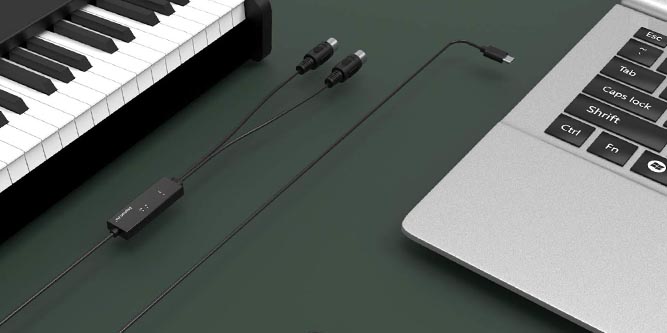When many people think of recording music, they think of something like this. You practice and practice and practice until you’re blue in the face. Then you book some time at a recording studio for hundreds of dollars a day.
If you aren’t recording a killer track every single time, those studio fees can rack up in a hurry. Let’s be fair. A recording studio is essential if you want to record live musical instruments. But what if you’re dropping an electronic track, or just want to listen to your compositions?
In that case, all you need is a computer and some recording software. There are dozens of suites available, on both PC and Mac. Find some software you like, and you’re ready to go, right? In theory, yes. There’s nothing stopping you from using a QWERTY keyboard and a mouse to create your compositions.
But these are clunky tools, and good musicianship requires something a little more elegant. For instance, a musical keyboard is designed for playing. Instead of painstakingly clicking your way through a timeline with a mouse, you can just play your music. This way, you can get in the flow without your hardware getting in the way.
With a MIDI interface, you can. MIDI is a tool for storing and sending music in a digital format. Instead of recording every nuance of a song, a MIDI track just captures the basics. It records the length and tone of each note, and can record 16 notes simultaneously in each track. With MIDI software, you can then apply an instrument “voice” to each track. This allows you to synthesize anything from a drum to a violin, and even add character to each note.
If you’re going to do this, though, you need a way to connect your MIDI keyboard to your computer. Unless you already own a specialized music workstation, your computer won’t have a MIDI input. This can be problematic for desktop owners, since you’d need to install a PCIe card. It’s even trickier for laptop owners, who may not have any expansion space at all. But with a USB to MIDI adapter, you don’t have to worry about those problems. You can plug your keyboard directly into the computer.
Today, we’re going to be reviewing three different USB to MIDI adapters. We’ll begin with the DigitalLife USB Type-C MIDI Cable. This is a USB Type-C adapter that’s suitable for smartphones as well as computers. Next, we’ll look at the Havit 5 Pin MIDI to USB Cable. This is a sturdy, no-nonsense adapter that’s designed for the rigors of travel. Finally, we’ll review the FORE MIDI to USB Interface MIDI Cable. This cable is engineered to resist interference from other electronics in environments with lots of cabling. Which is the best? Let’s take a closer look, and see what we discover!
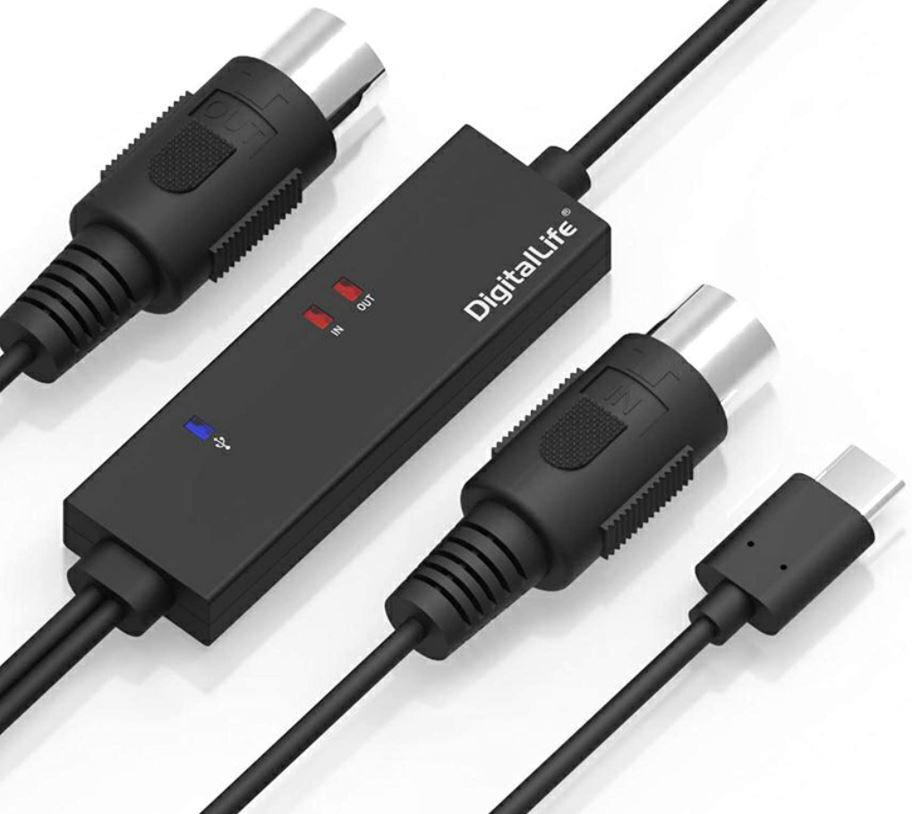
DigitalLife USB Type-C MIDI Cable
The DigitalLife USB Type-C MIDI Cable is a Y-shaped cable that converts MIDI to USB and vice-versa. Each MIDI tip has a standard 5-pin design, with a rectangular housing in the center. At the other end of the cable is a USB Type-C tip. One thing we should mention at this point is that some keyboards have one MIDI port, while others have two. If your keyboard only has a single port, that’s just fine. It simply means that you can only use the adapter for recording to your PC. You won’t be able to send MIDI tracks from your PC back the other direction. This is not unique to the DigitalLife cable. It’s the same for any USB to MIDI adapter.
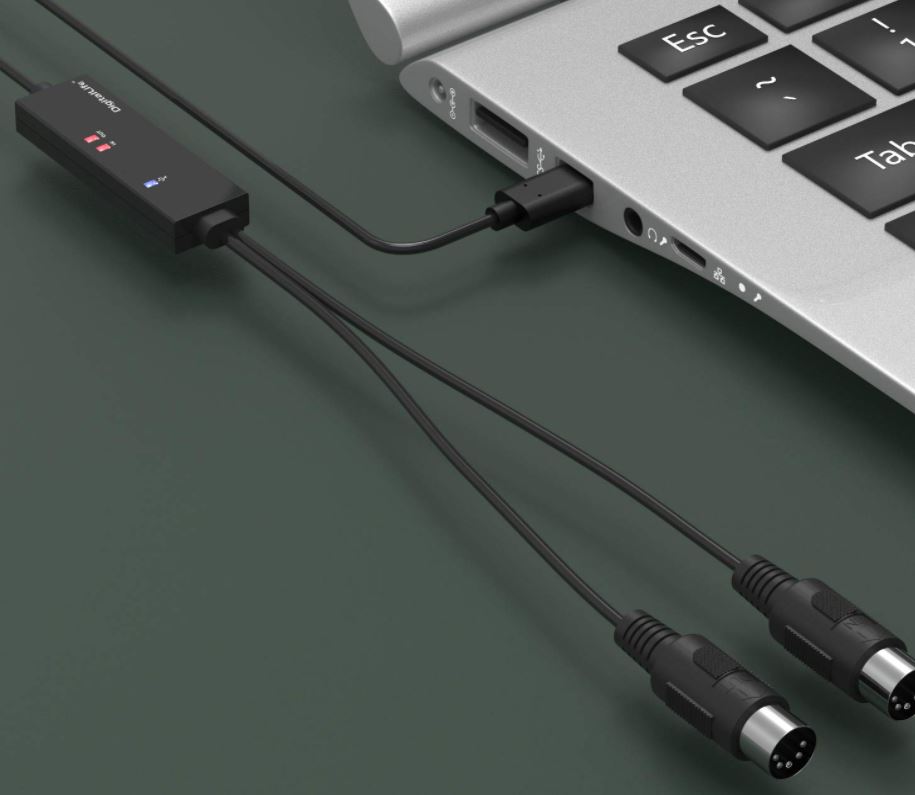
The cable itself is only three feet in length, which can be a bit short for some applications. That said, it’s reasonably flexible, and won’t tangle easily. When it does, the rubbery insulation makes it easy to untangle. Not only that, but the connections and tips are all well-engineered and well-shielded. They have a beefy housing with a textured grip, so you can pull them out without tugging the wire. If the wire does get tugged, reinforced rings at both ends will help to prevent serious damage. The MIDI plugs themselves are also built to perfection, with a sturdy, metallic design.
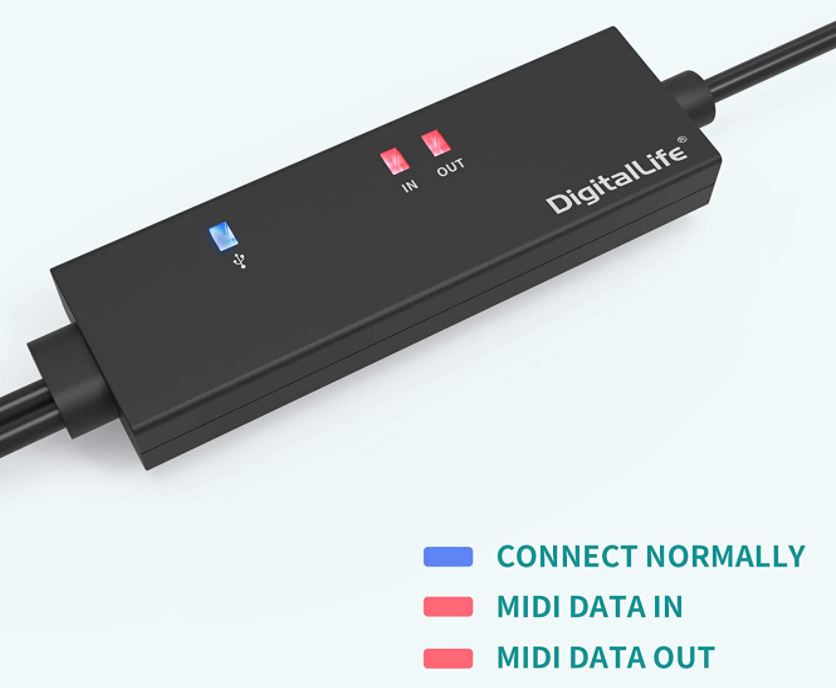
The middle junction box is where the adapter hardware is housed. The case is a plain matte black, suitable for onstage use, with a discreet DigitalLife logo on one corner. There are also a trio of LEDs that illuminate to show you the adapter’s status. A blue LED lets you know when the USB connection is active, as well as when the adapter is powered. These are one and the same, since the DigitalLife adapter gets its power via USB. Two red LEDs let you know when a signal is being sent or received respectively. With all of this information at your fingertips, it’s easy to troubleshoot any hardware problems.
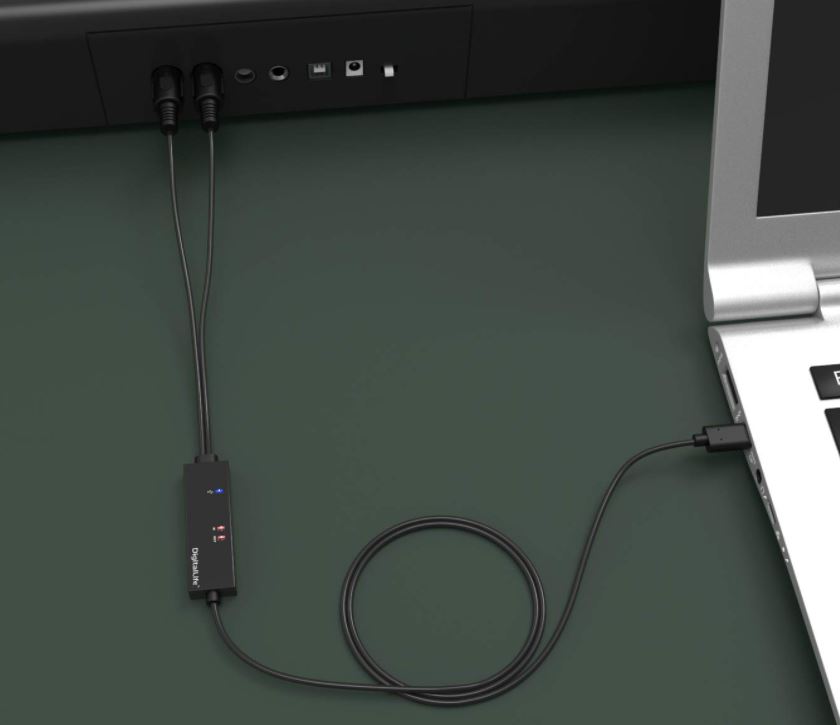
The DigitalLife USB Type-C MIDI Cable is compatible with all versions of Windows, starting with Windows 7. It’s also compatible with all versions of Mac OS, beginning with Mac OS 10.15. No driver installation should be necessary, provided you have a working internet connection. Your operating system will automatically detect and download the correct drivers. In theory, this should also be the case for Android. However, DigitalLife does not officially provide Android support, and support for different devices varies from Android phone to Android phone. MacBook Pro owners should also look at their individual laptop. Many newer models only support Thunderbolt, in which case you’ll need a Thunderbolt 3 hub for any USB device.
DigitalLife covers their USB to MIDI adapter with a 12-month manufacturer’s warranty. By most standards, this is a fairly short warranty, but it’s enough to find any defects. If you run into any issues in this time period, just send it back for a full refund or a replacement.
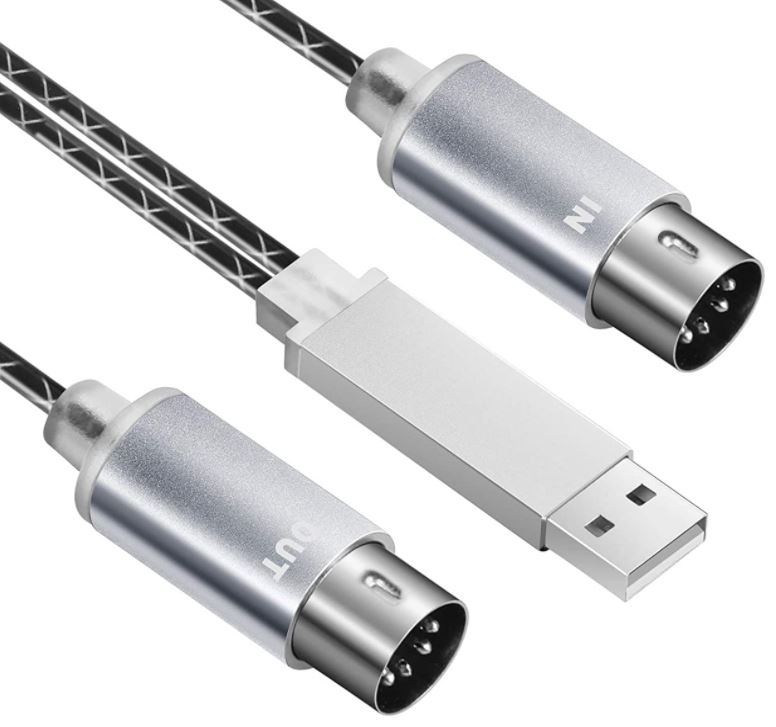
Havit 5 Pin MIDI to USB Cable
Havit specializes in producing computer accessories for niche applications. For instance, we once reviewed an RGB gaming mouse pad of theirs, and we liked what we saw. The Havit 5 Pin MIDI to USB Cable is in a similar vein, a high-quality product for a niche use.
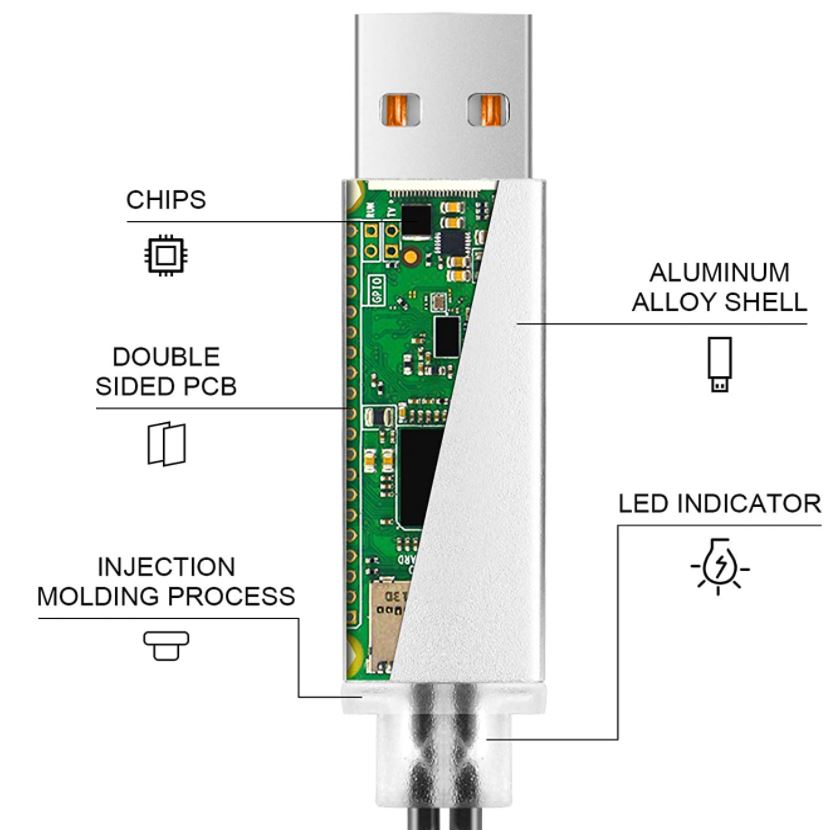
It has a Y-shaped design, like the DigitalLife adapter, but it’s 5.9 feet long for longer runs. It uses standard 5-pin MIDI connectors. but uses USB Type-A instead of Type-C. This makes it less suitable for smartphones, but better-suited for plugging into the front of a PC.
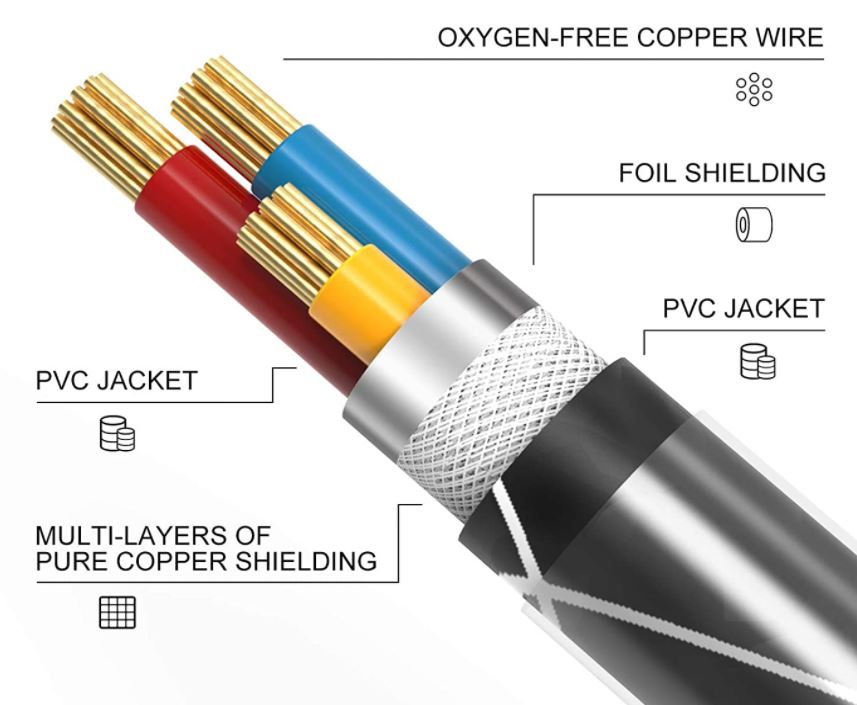
The adapter housing is constructed from rugged aluminum instead of plastic. Even more impressively, so are the cable tips and grips. This makes the Havit cable exceptionally rugged, even by the standard of “pro-grade” cables. The cable itself is well-shielded, but it has a tendency to get tangled due to the stiff design. Like the DigitalLife adapter, the Havit adapter also has a set of indicator lights to keep you posted on the device’s status.
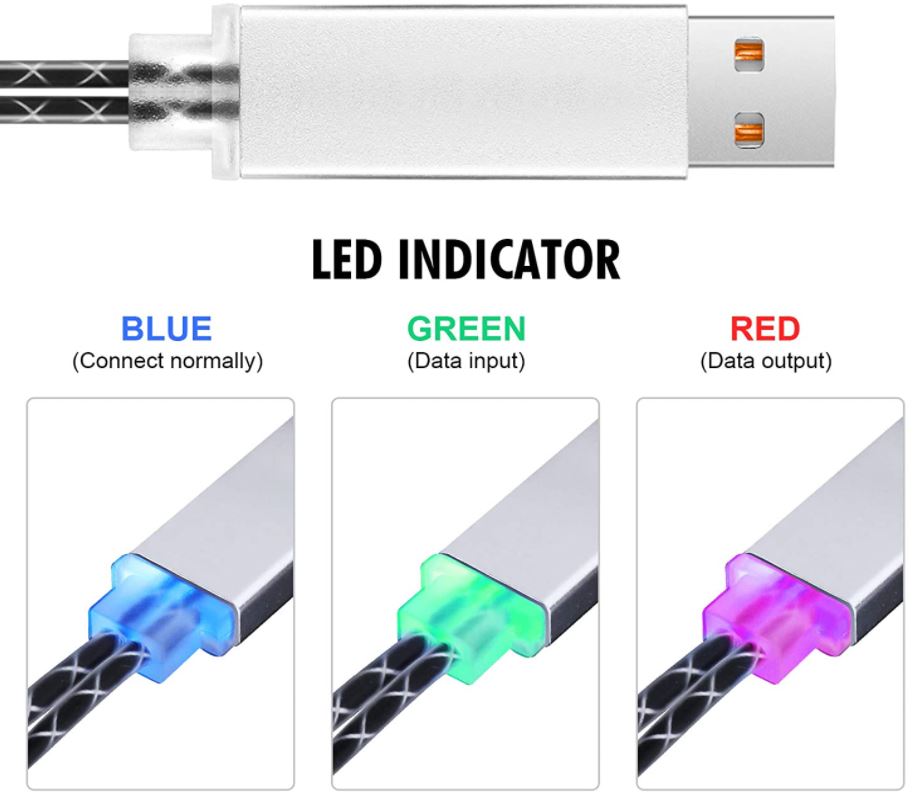
The Havit 5 Pin MIDI to USB Cable is compatible with all versions of Windows dating back to Windows XP. It’s also compatible with most versions of Mac OS and iOS. It even works with Android 6.0 and later, although as we noted, you’ll need an adapter for smartphones. Even so, that’s a lot of plug and play compatibility for a single adapter.
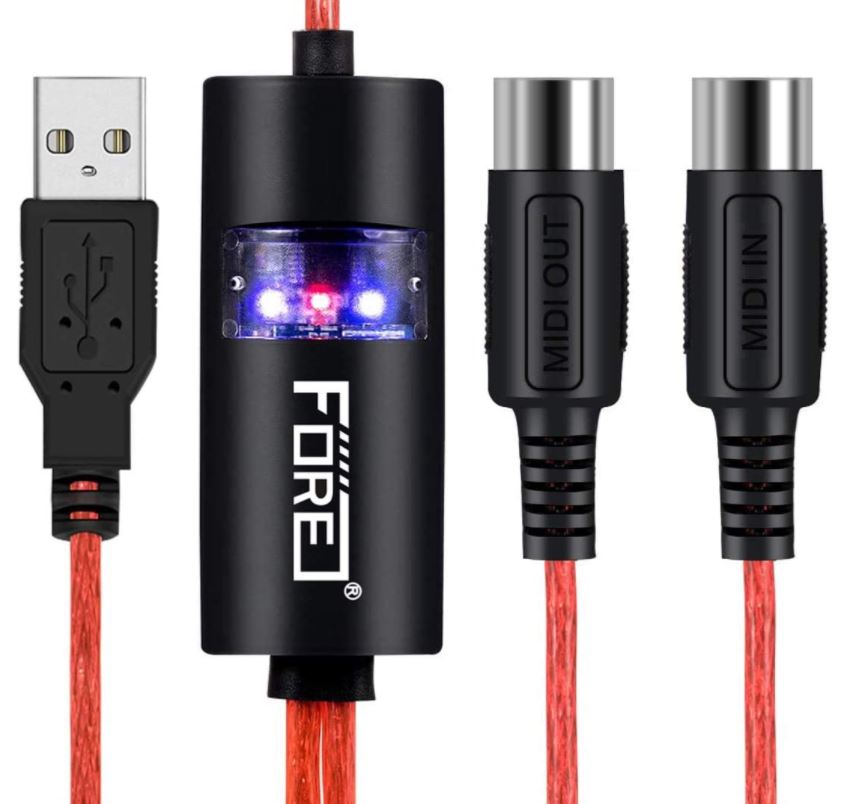
FORE MIDI to USB Interface MIDI Cable
The FORE MIDI to USB Interface MIDI Cable is the longest on our list, at 6.5 feet in length. Like the others, it has a Y-shaped design, with a pair of 5-pin MIDI connectors and an adapter in the center. The USB plug has a standard Type-A design, for compatibility with most desktops and laptops. The central adapter unit has a cylindrical shape, with a high-tech-looking window in the middle. This window houses the LED indicators, which keep you informed of the adapter’s connection status.
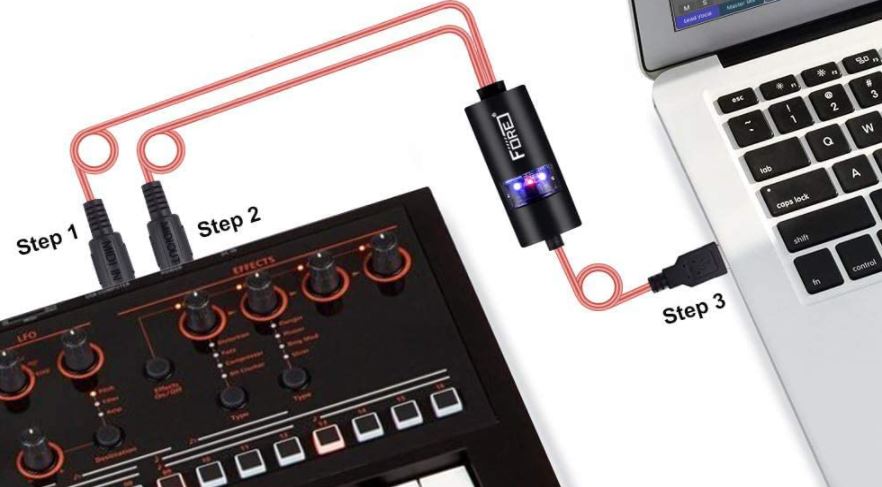
The main attraction of this adapter is the advanced shielding and data processing. The wire is constructed from multiple layers, including multiple layers of copper shielding. For most home recording applications, you really won’t notice much difference. However, if you’ve got a lot of cables running in the same area, it can create interference. In this case, a well-shielded wire is a huge benefit. Moreover, the advanced processing chip is faster than most others. You won’t notice this for most compositions. But if you’re playing a ton of overlapping chords, you’ll experience better stability.
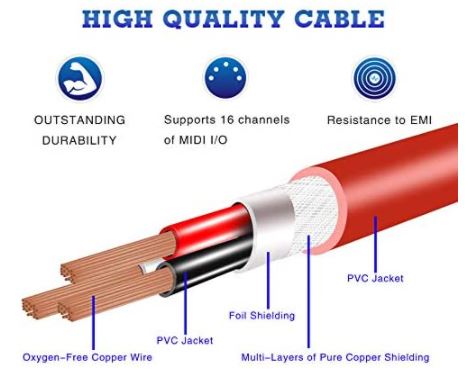
The FORE MIDI adapter is compatible with most versions of Mac OS and Windows. This includes older versions of Windows such as Windows XP. It’s not, however, compatible with smartphones. The FORE adapter is for computers and laptops only. It’s also available in both red and blue variants, but that’s a purely cosmetic option.
Final Verdict
So, which one of these adapters is the best? Let’s start with the DigitalLife USB Type-C MIDI Cable. The DigitalLife cable is clearly your best option if you’re using a smartphone. With a USB Type-C connection, you don’t have to worry about any adapter. You might have to worry about Android compatibility, though, so keep that receipt handy. Even on computers, the DigitalLife cable performs quite well for the price. It’s a great choice if you need a short cable for home use.
The Havit 5 Pin MIDI to USB Cable is a better choice if you need the best possible durability. The aluminum construction is its main selling point, and it’s easy to see why. It can be plugged and unplugged thousands of times, or even dropped, and it will keep on going. In addition to all that, device support is fairly respectable. Not only do you get support for Windows and Mac, but for Android as well. The result is a rugged adapter that’s a workhorse on the road.
The FORE MIDI to USB Interface MIDI Cable is the best choice for more professional applications. Home users probably won’t notice the advanced shielding and faster processing speeds. But inside the studio, they’re a godsend. On the downside, the FORE adapter has no official smartphone support, but that’s not needed in the studio.
Meet Ry, “TechGuru,” a 36-year-old technology enthusiast with a deep passion for tech innovations. With extensive experience, he specializes in gaming hardware and software, and has expertise in gadgets, custom PCs, and audio.
Besides writing about tech and reviewing new products, he enjoys traveling, hiking, and photography. Committed to keeping up with the latest industry trends, he aims to guide readers in making informed tech decisions.

